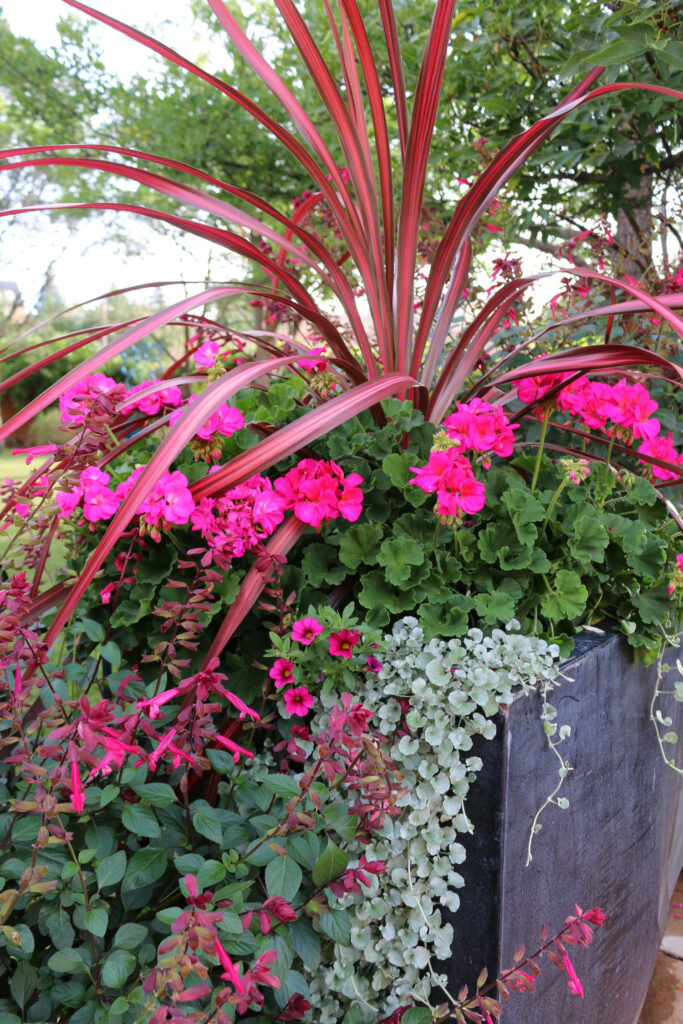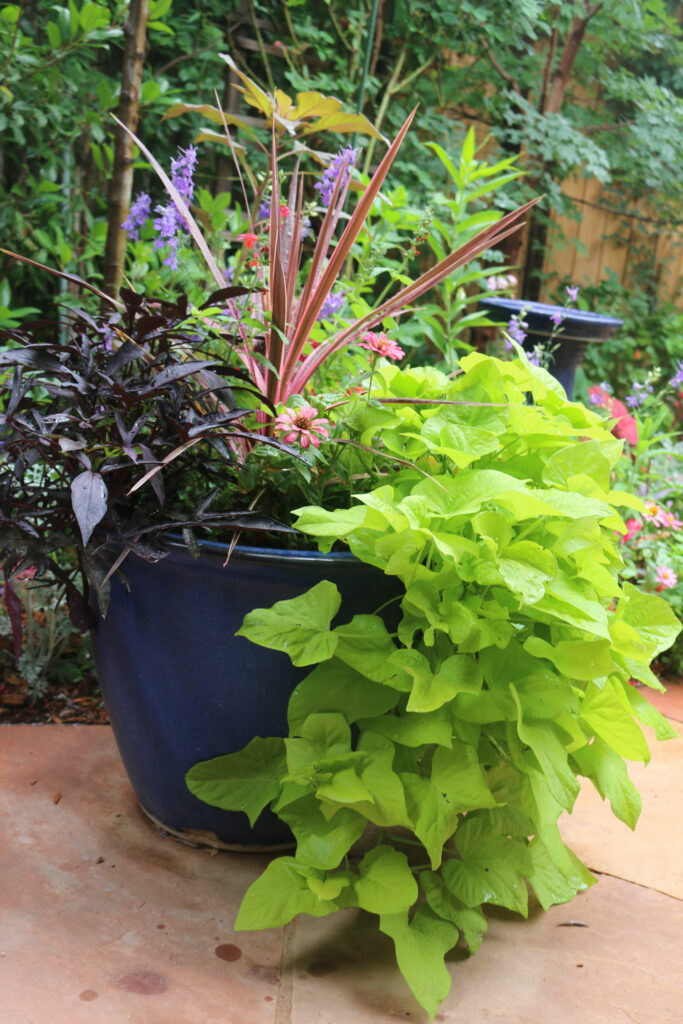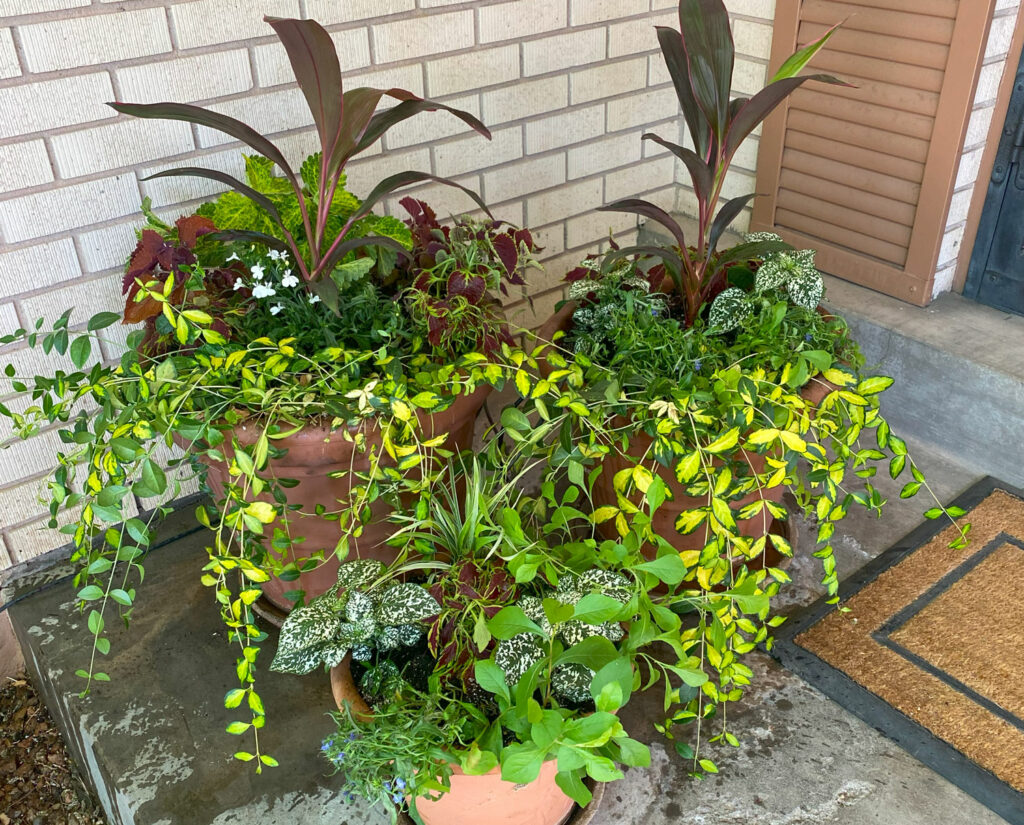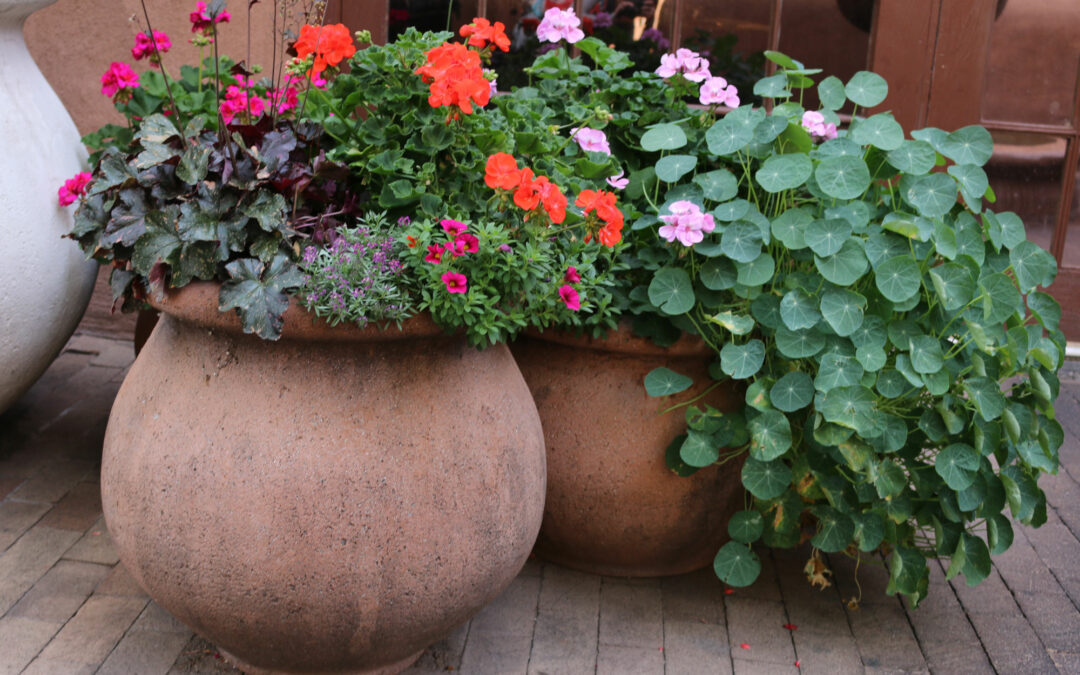One of our favorite things to do at Bennu Organics is design container gardens. We like to talk about the “wow factor,” and containers are a fantastic way to add stunning, season-long color to our landscapes without digging a single hole in our hard, unforgiving soil.
Here are six helpful hints for creating your own successful container designs:
1) Location: Will the containers be in full sun, partial sun or full shade? In most cases, full sun containers in New Mexico require daily watering. If you don’t want to water every day, consider selecting plants that require less water, like succulents, cacti or perennials. Placing containers in partial shade will also save water. It’s important to know the amount of sunlight you will have available for each container prior to purchasing plants.
2) Size: What size are the containers, or what size do you want them to be if you’re purchasing them? You’ll need plenty of soil to fill or refresh the containers, and you want to make sure you have enough plant material to give your containers a nice, full look.
3) Design: Well-designed containers require three types of plants: thrillers, fillers and spillers. The thriller is something tall and showy, while fillers are shorter plants that fill in the spaces. Spillers are those low vining-type plants that spill gracefully over the sides of the container.
4) Color theme: I like picking a color palette and then selecting different plants within that palette. I don’t want my containers to be identical, but I do want them to complement each other. Also, depending on the locations of the containers, I will often do a “mirror image” design if the containers are on either side of an entry way, for example.
5) Lighting and water: Select plants that have similar lighting and water requirements. You don’t want to put a cactus as a thriller and wave petunias as your filler. One or both will suffer from too much or a lack of water.
6) Maintenance: Besides watering consistently, you will want to trim and deadhead your designs frequently. Petunias and calibrachoa (classified both as fillers and spillers) need regular deadheading to keep the blooms going strong. Trim them heavily when they get “leggy.” They respond well to a really good haircut. If you are consistent with your maintenance and watering, the containers should keep their “wow factor” all season long. Also, regular fertilizing is crucial to maintaining season-long blooms. In the active growing season, we fertilize our containers every two weeks.


While the following list of possible plants you can use in containers is hardly comprehensive, it should help get your creative juices flowing:
Shade/Part Shade
Thrillers: caladium, alocasia, sansevieria/dracaena, colocasia, cordyline, etc.
Fillers: bacopa, begonias, Boston fern, caladium, coleus, begonias, dusty miller, impatiens, etc.
Spillers: asparagus fern, tradescantia, creeping wire vine, dichondra ‘Silver Falls’, helichrysu, ‘Licorice Vine’, ivy geranium, variegated lamium, lobelia, Tahitian bridal veil, vinca major/minor, (vine), etc.
Full Sun/Partial Sun
Thrillers: lantana, papyrus, pentas, purple fountain grass, dracaena spikes, small topiaries and trees, etc.
Fillers: nemesia, nierembergia, osteospermum, pentas, petunia, calibrachoa, salvia, etc.
Spillers: plectranthus, portulaca, trailing petunia, vinca (vine), verbena, and sweet potato vine (Ipomoea batatas), etc

Finally, your container designs should bring you joy, so get creative! What do you love? What are your goals? Do you want to attract hummingbirds and butterflies? Do you want fragrance? Do you want a color explosion, or are you looking for something more subdued? Your containers should reflect their designer, so pick things that you really enjoy — not just the plants you see on Pinterest or in magazines, although if you love the ones you see in those places, imitation is the sincerest form of flattery! Some people like to use all annuals, some like a combination of annuals and perennials and some even add edible plants into their designs. The sky is the limit!
As with all things related to plants, design and gardening, remember that everything we do is a grand experiment. Don’t feel guilty if you mistakenly combine a low-water plant and a high-water plant in the same container and one of them dies. Learn from your experience and simply replace the dead plant with something more suitable.
Learn more about gardening here:
Easy Edible Plants for First Time Growers
Water Harvesting for Residential Landscapes
5 Steps to Stunning Fall Container Gardens


